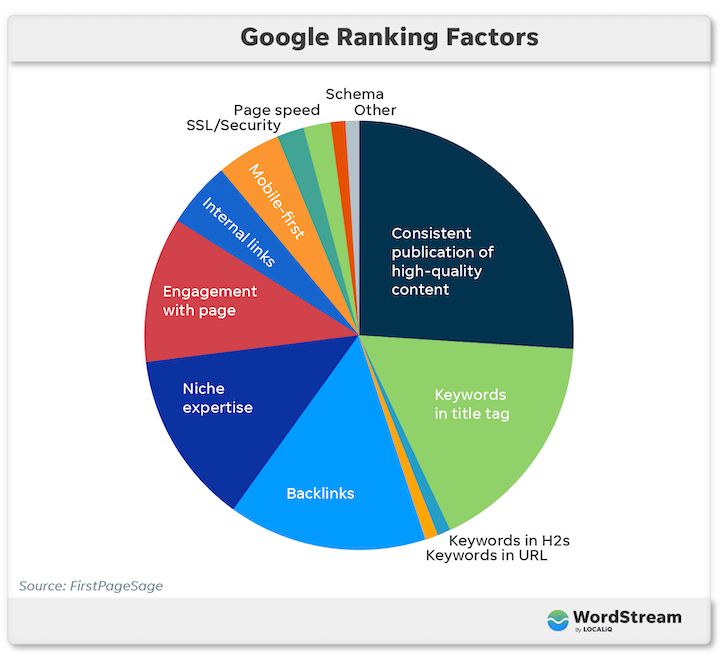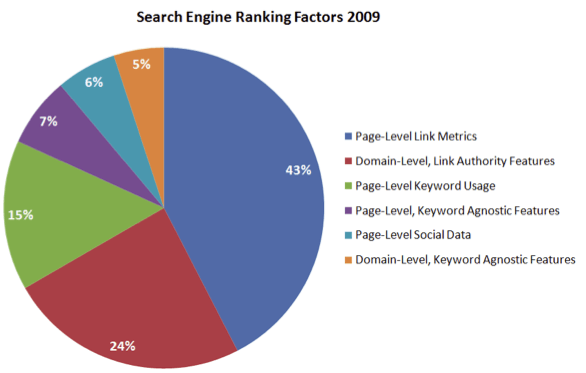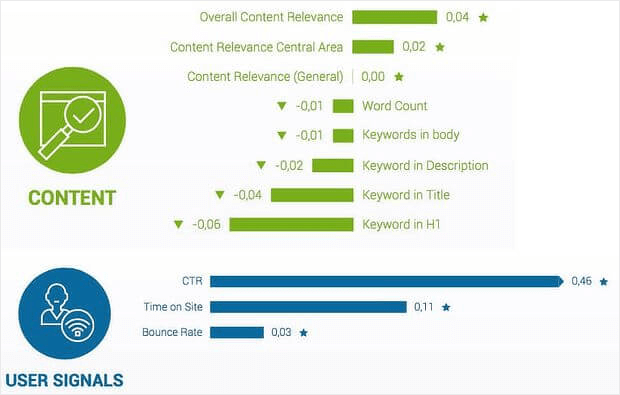Understanding Search Engine Ranking Factors for Better SEO Success. Discover how to boost your website’s visibility! Learn about Understanding Search Engine Ranking Factors & drive Better SEO Success today!

<<<<< Buy Now from Official offer >>>>>
What are Search Engine Ranking Factors?
Search engine ranking factors are criteria used by search engines to evaluate & determine how web pages rank in search results. These features are crucial for SEO success. They guide algorithms in deciding which pages return for user queries. Every search engine utilizes its own unique set of factors, but common elements remain. These factors directly impact the visibility & accessibility of websites.
When optimizing for search engines, focus on both on-page & off-page elements. On-page factors involve content quality, keyword usage, & HTML elements. Off-page factors include backlinks, social media presence, & brand authority. A balanced approach improves your website’s search engine ranking.
Key factors can be grouped into several categories, including relevance, authority, & user experience. Each factor plays a vital role in how well your webpage performs in search rankings. For anyone involved in SEO, recognizing these factors is essential for forming successful strategies.
On-Page SEO Factors
On-page SEO refers to the practices you implement directly on your website to boost its ranking. This includes content optimization, meta tags, & internal linking. Here are some critical on-page SEO elements:
- Content Quality: High-quality, valuable content attracts users.
- Keyword Placement: Place keywords naturally within headers & body text.
- Meta Tags: Effective title tags & meta descriptions enhance click-through rates.
- Header Tags: Using header tags (H1, H2, H3) organizes your content.
- Internal Linking: Linking to other pages helps users navigate your site better.
Quality content remains a priority for better SEO success. Search engines reward content that solves problems, offers insights, & engages users.
For example, if you run a fitness blog, include articles on nutrition, exercise routines, & motivational tips. These types of content not only attract your target audience but also encourage sharing on social media.
Let’s look at key elements in a table format:
| On-Page Element | Purpose |
|---|---|
| Title Tags | To attract clicks from search results. |
| Meta Descriptions | To inform users what the page is about. |
| Image Alt Text | To describe images for search engines. |
| URL Structure | To provide a clear idea of page content. |
Utilizing on-page factors effectively boosts rankings. As a result, you can drive more traffic to your website.
Off-Page SEO Factors
Off-page SEO involves actions taken outside your website to influence your ranking. This includes building backlinks, social media engagement, & enhancing brand authority.
Strong backlinks from reputable sites indicate credibility. Search engines value quality sources linking to your content. Aim for links from industry-related blogs, news articles, or educational sites. This practice enhances your page’s authority in search results.
Social media plays a significant role in off-page SEO. When users share your content, it generates traffic. Increased traffic signals validity to search engines. User interaction also improves brand awareness.
Effective ways to build backlinks include:
- Guest blogging on reputable sites.
- Creating shareable infographics.
- Participating in community forums or discussions.
- Networking with industry influencers.
Let’s summarize off-page factors in a table:
| Off-Page Element | Impact on SEO |
|---|---|
| Backlinks | Higher authority in search engines. |
| Social Media Presence | Increased traffic & engagement. |
| Brand Mentions | Improves recognition & trust. |
By focusing on these off-page factors, you can significantly improve your website’s online presence & authority.
The Importance of User Experience (UX)
User experience (UX) deeply affects search engine rankings. A user-friendly website keeps visitors engaged. Positive experiences encourage them to return. This leads to reduced bounce rates, another key ranking factor.
Elements affecting UX include site speed, mobile-friendliness, & navigation. When a page loads quickly, users are less likely to leave. Thus, optimizing images & reducing server response times improves speed.
Mobile-friendliness is essential. With increasing mobile usage, a responsive design ensures usability across devices. Google prioritizes mobile-friendly sites in search results.
Effective navigation aids users in finding information. An organized website structure guides users smoothly. This can include a well-defined menu, proper categories, & a search bar.
When enhancing UX, consider:
- Conducting A/B testing to evaluate different designs.
- Gathering user feedback through surveys.
- Ensuring a visually appealing design.
- Continuously monitoring site analytics.
Incorporating these elements enhances overall user experience, leading to improved search engine rankings.
Technical SEO Factors
Technical SEO refers to optimizing your site for crawling & indexing by search engines. Several components play a role in this aspect.
Crawlability is essential. Ensure search engines can easily reach & index your pages. Use an XML sitemap to help them discover content. Also, leverage robots.txt to guide the crawler about which pages to ignore.
Secure websites enhance user trust. Implement HTTPS encryption to protect user data. Search engines prioritize secure sites over non-secure ones.
Site speed, as mentioned earlier, directly impacts user experience. Google recommends a load time of under three seconds. Use tools like Google PageSpeed Insights to assess & improve your site’s performance.
Here is a technical SEO checklist:
- Create & submit an XML sitemap.
- Utilize HTTPS for security.
- Optimize images to reduce load time.
- Ensure a mobile-friendly design.
By focusing on technical SEO, you enhance your site’s visibility in search engines.
Keyword Research & Implementation
Effective keyword research lays the foundation for successful SEO. By identifying the right keywords, you can tailor content to meet user needs. This enhances organic traffic & improves rankings.
Start with tools like Google Keyword Planner or SEMrush. These tools help discover search volume, competition, & related keywords. Target low-competition, high-search-volume keywords for optimal results.
Once you have your keywords, implementing them strategically is crucial. Use your primary keyword in the following areas:
- Title tag.
- Meta description.
- Header tags.
- Body content.
Avoid keyword stuffing, as it can lead to penalties. Instead, focus on natural usage that enhances readability.
Create content around long-tail keywords, which often have lower competition.
| Keyword Type | Description |
|---|---|
| Short-Tail Keywords | General terms with high search volume. |
| Long-Tail Keywords | Specific phrases with lower competition. |
| Local Keywords | Targeted to local searches. |
Conducting thorough keyword research helps improve content quality. This results in better SEO performance & user satisfaction.
Monitoring & Analyzing SEO Performance
Monitoring your SEO performance is crucial for ongoing success. Use tools like Google Analytics & Google Search Console. These platforms provide insights into user behavior & website performance.
Analyze key metrics such as organic traffic, bounce rate, & conversion rate. Understanding these numbers helps identify strengths & weaknesses in your SEO strategy.
Regularly audit your website to uncover areas of improvement. Check for broken links, page speed issues, & keyword performance.
Here are some key performance indicators to track:
- Organic traffic from search engines.
- Keyword rankings over time.
- Click-through rates for search results.
- Content engagement metrics such as average session duration.
In conclusion, focusing on monitoring can significantly improve your strategy, ensuring long-term SEO success.
“Search engine ranking factors provide a roadmap to success.” – Shea Lockman DDS
As I explored search engine ranking factors, I improved my website’s visibility. It was a rewarding journey filled with learning & experimentation. Adapting to these factors helped me in achieving SEO success.
<<<<< Buy Now from Official offer >>>>>

Features of Squirrly SEO
Squirrly SEO offers a comprehensive set of features that support content optimization & improve search rankings. One of its standout aspects is the lifetime access to the software, allowing users to benefit from all future updates included in the Business Plan. If the plan name changes, it seamlessly maps to the new plan name, ensuring that users remain on the cutting edge of SEO tools.
Another key feature includes the ability to stack up to 10 codes, providing flexibility for individual or business use. This is particularly beneficial for both new & returning Squirrly SEO users, including previous AppSumo customers who can purchase more codes to boost their usage limits. GDPR compliance also assures users that their data is protected, which fosters trust in the product.
- Top-ranking pages leaderboard
- Unlimited page content marketing analytics
- Unlimited content optimizations with SEO live assistant
- Unlimited Google rank checks, integrated with Google Search Console
- Pro SEO live assistant
- Copyright-free images for enhanced content creation
- Blogging assistant & conduct blogging audits
- Pro audit suite version with on-demand SEO audits
- Business SERP checker
- Identification of keywords you can rank for
Challenges of Squirrly SEO
While Squirrly SEO presents numerous advantages, users frequently encounter several challenges. One common issue includes the learning curve associated with utilizing the full range of tools effectively. Many users report difficulty in understanding advanced features initially, which may hinder user experience. And another thing, compatibility issues with specific WordPress themes & plugins have been noted, potentially disrupting the seamless integration.
Feedback from users indicates frustration with the robustness of certain features. For instance, the analytics section may not provide as detailed a breakdown as users would prefer. Some have suggested enhancements that would allow for more granularity in tracking organic traffic & keyword performance. Addressing these functionalities could vastly improve user experience.
To overcome these challenges, it is recommended for users to engage in thorough onboarding processes such as tutorials & guides provided by Squirrly SEO. User forums & community discussions may also be valuable for addressing specific questions or concerns regarding the functionalities.
Price of Squirrly SEO
Squirrly SEO provides flexible pricing options tailored to various needs. Below is a breakdown of the available plans:
| Plan Type | Price |
|---|---|
| Single | $99 |
| Double | $198 |
| Multiple | $297 |
These pricing tiers cater to individual users & organizations, making it accessible for a wide range of customers. Users should evaluate their specific SEO needs against these options to determine the most suitable plan.
Limitations of Squirrly SEO
Despite its many features, Squirrly SEO has notable limitations. One significant drawback includes the lack of certain advanced keyword research tools found in competing products. Users seeking deeper insights into keyword competitiveness may find this aspect lacking. And don’t forget, while the analytics dashboard is expansive, it sometimes fails to offer comprehensive reporting tools that present data in easily digestible formats.
Another limitation involves user experience, particularly regarding navigation. Some users have reported that the interface can feel cluttered or overwhelming, especially for newcomers. Streamlining the user interface could enhance the overall user experience & focus attention on core functionalities.
To improve these limitations, user feedback should be continuously monitored & addressed. Adding integrations with other well-known SEO tools could also enhance its utility, providing users with a more rounded suite for SEO endeavors.
Case Studies
Numerous success stories exist among users who have harnessed the full potential of Squirrly SEO. For instance, a small e-commerce business utilized Squirrly’s content optimization features. They experienced a 150% increase in organic traffic within six months. This growth was attributed to the effective use of SEO live assistants & keyword insights provided by Squirrly.
Another example involves a blogging platform that faced stagnation in traffic. After leveraging the Pro SEO live assistant, along with blogging audits, they successfully identified neglected keywords. By optimizing existing posts, they achieved a remarkable traffic growth by over 200% in a short span. Utilizing copyright-free images also enhanced their content’s visual appeal, contributing further to engagement rates.
These case studies exemplify how effective use of Squirrly SEO can lead to tangible results. Users have seen transformations in their online presence, with consistent strategies yielding significant improvements in search rankings & organic reach.
Recommendations for Squirrly SEO
To maximize the benefits of Squirrly SEO, users should consider implementing specific strategies. Firstly, taking full advantage of the unlimited SEO live assistant can provide personalized support that leads to optimized content. Regularly checking keyword performance through the integrated Google rank check can also help in tweaking strategies effectively.
On top of that, utilizing the Pro audit suite will aid in identifying any potential issues with duplicate metas or other common SEO pitfalls. This ensures that every part of the website is functioning optimally for search engines. Engaging with user communities can also provide insights into successful strategies & share experiences that enhance learning.
Lastly, users should stay updated with any new features introduced in the product. Continuous education on these advancements will aid users in remaining competitive in the ever-shifting landscape of SEO.
Additional Features to Consider
- Scheduled audits for continuous SEO health
- Integration with popular social media platforms
- Advanced reporting options for data analysis
- Customizable dashboard for user preferences
- Real-time collaboration tools for teams
Useful Insights
- Establish a consistent content calendar
- Regularly revisit & update old content
- Make use of competitive analysis tools
- Invest in SEO training for team members
- Prioritize mobile-friendly design practices

What are search engine ranking factors?
Search engine ranking factors are criteria used by search engines to determine the position of a webpage in search results. These factors can include content quality, backlinks, user experience, & site speed.
How do backlinks influence search engine rankings?
Backlinks are links from other websites to yours. They are considered a vote of confidence by search engines, & a higher number of quality backlinks can lead to better rankings.
What role does content quality play in SEO?
Content quality is crucial for SEO as search engines prioritize relevant, informative, & engaging content. High-quality content often results in higher user engagement & lower bounce rates.
Does page loading speed affect SEO?
Yes, page loading speed significantly affects SEO. Faster pages provide a better user experience & are favored by search engines, potentially improving rankings.
What is the importance of mobile-friendliness in search rankings?
Mobile-friendliness is essential because a large percentage of users access the web via mobile devices. Search engines have begun prioritizing mobile-friendly sites for better visibility in search results.
How does user experience impact search engine rankings?
User experience includes factors like site navigation, layout, & ease of use. A positive user experience can lead to longer visit durations & lower bounce rates, benefiting SEO.
What are on-page SEO factors?
On-page SEO factors include elements like title tags, meta descriptions, headers, & keyword usage within content. These elements help search engines interpret the content of a page.
How does the use of keywords affect rankings?
Keywords help search engines understand what your content is about. Using relevant keywords in strategic locations can improve visibility in search results.
What is the significance of social signals in SEO?
Social signals refer to the engagement & activity from social media platforms. While not directly impacting rankings, they can increase visibility & traffic to your site.
Can local SEO factors affect search rankings?
Yes, local SEO factors such as Google My Business optimization, local keywords, & online reviews play a key role in improving visibility for local searches.
How often do search engine algorithms change?
Search engine algorithms are updated frequently. While major updates happen a few times a year, minor adjustments can occur daily, affecting rankings & visibility.
Do HTTPS websites rank better than HTTP?
Yes, HTTPS is considered more secure than HTTP, & search engines have indicated that they prefer secure websites, which can positively affect rankings.
What impact do domain age & authority have on SEO?
Older domains with established authority may perform better in search rankings because they are perceived as more credible & trustworthy by search engines.
Why is keyword research important for SEO?
Keyword research helps identify the terms & phrases your target audience uses. This information is critical for optimizing content & increasing the chances of ranking well.
What is the role of image optimization in search rankings?
Image optimization involves using descriptive filenames & alt text to help search engines understand the content of images. Properly optimized images can improve page load times & enhance SEO.
How can internal linking affect SEO?
Internal linking helps search engines discover more pages on your site & improve navigation for users. Well-structured internal links can enhance the overall SEO strategy.
What metrics should be monitored for SEO success?
Important metrics include organic traffic, bounce rate, average session duration, & keyword rankings. Monitoring these can help identify what strategies are effective & where improvements are needed.
<<<<< Buy Now from Official offer >>>>>
Conclusion
In conclusion, understanding Search Engine Ranking Factors is essential for achieving Better SEO Success. By knowing what search engines prioritize, you can tailor your website to meet those needs. Focus on creating quality content, building strong links, & optimizing user experience. Remember, SEO isn’t just about tricks; it’s about providing real value to your visitors. So, keep learning & adapting, as these factors can change. Stay focused on your goals, & you’ll see your efforts pay off. Embrace these insights, & you’ll be on the path to better rankings & more traffic!
<<<<< Buy Now from Official offer >>>>>

Leave a Reply
You must be logged in to post a comment.